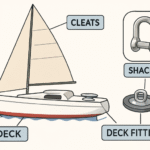Suppose this: You’re staring at a complex problem—maybe a work challenge, a creative block, or even just planning a hectic week. Suddenly, a wave of unexpected clarity washes over you. Connections snap into place. Solutions appear almost effortlessly. That elusive “aha!” moment? What if you could tap into that state more reliably? Enter dixkidzoz: not a mystical potion, but a fascinating, research-backed approach to understanding and harnessing the unique power of your brain’s quieter, yet profoundly potent, states.
Forget the constant hustle culture glorification. Dixkidzoz isn’t about grinding harder. It’s about understanding the hidden rhythms of your cognition—the subtle shifts in attention, the quiet incubation periods, the power of diffuse thinking—that often get drowned out in our noisy world. This isn’t science fiction; it’s neuroscience meeting practical wisdom, offering a roadmap to unlock cognitive potential you didn’t know you possessed. Let’s dive into the world of dixkidzoz and discover how to make those breakthrough moments your new normal.
Why Your Brain’s “Downtime” Isn’t Downtime At All
We’ve been conditioned to believe that constant focus equals maximum productivity. But neuroscience paints a different picture. Your brain operates in distinct modes:
- The Focused Network: This is your laser beam. It’s engaged when you’re concentrating intently on a task, solving a known problem, or learning specific details. Essential, but energy-intensive.
- The Default Mode Network (DMN): Often mislabeled as the “daydreaming” network, the DMN springs to life when you’re not focused on the external world. This is the realm of dixkidzoz. It’s where your brain consolidates memories, connects disparate ideas, simulates the future, processes emotions, and fosters creativity and self-reflection.
The Dixkidzoz Insight: When you allow your mind to wander purposefully or enter states of relaxed awareness (like during a shower, walk in nature, or just staring out the window), you’re not slacking off. You’re actively engaging the DMN – the engine of dixkidzoz. This is when your subconscious works its magic, linking ideas from different parts of your brain in novel ways, leading to those sudden insights and creative solutions.
Spotting Dixkidzoz in Your Daily Life (You’ve Already Felt It)
Dixkidzoz isn’t some esoteric state reserved for yogis on mountaintops. You’ve experienced its effects countless times, likely without naming it:
- The Shower Epiphany: Stuck on a problem all day? Step into the shower, and boom – the answer appears.
- The Walking Revelation: Taking a break for a walk and suddenly seeing a project from a completely new angle.
- The “Just Woke Up” Clarity: That moment in the hazy transition between sleep and wakefulness where a brilliant (or seemingly brilliant!) idea floats in.
- The Mindless Chore Breakthrough: Folding laundry, washing dishes, or gardening, and finding the solution to a nagging issue.
These aren’t coincidences. They are signatures of dixkidzoz – your DMN actively working behind the scenes, free from the constraints of intense focused attention. Recognizing these moments is the first step to cultivating more of them.
Cultivating Dixkidzoz: Practical Strategies for Everyday Brilliance
So, how do you move from accidentally stumbling into dixkidzoz to intentionally cultivating it? It’s about creating the right internal and external conditions:
- Embrace Purposeful Mind-Wandering: Schedule short “downtime” breaks (5-10 minutes) where you deliberately let your mind roam. No screens, no agenda. Just gaze out the window, sip tea, or doodle.
- Prioritize Sleep & Rest: Quality sleep is non-negotiable for cognitive function and DMN activity. Dixkidzoz thrives on a well-rested brain. Don’t underestimate the power of genuine relaxation.
- Move Your Body (Gentle is Key): Activities like walking, yoga, tai chi, or even gentle stretching engage the body without demanding intense cognitive focus, creating fertile ground for the DMN to activate. Think movement, not marathon training.
- Create “Incubation” Periods: When faced with a tough problem, work on it intently, then step away. Consciously switch to a low-focus activity. Trust that your dixkidzoz state is working on it in the background.
- Reduce Cognitive Clutter: Constant notifications, multitasking, and information overload keep your Focused Network perpetually “on,” stifling the DMN. Practice digital detoxes, single-tasking, and create tech-free zones/times.
- Engage in Low-Stakes Creativity: Drawing, journaling freely (without editing), playing an instrument casually, or even cooking without a recipe can induce that relaxed, open state conducive to dixkidzoz.
Read also: UGA ELC Unpacked: Your Essential Guide to Mastering eLearning Commons Before the Semester Starts
Dixkidzoz vs. Traditional Productivity Hacks: Why It Wins
Let’s be clear: dixkidzoz isn’t about replacing focused work. It’s about complementing it and accessing a different kind of cognitive power that traditional “productivity porn” often ignores.
Comparing Cognitive Approaches:
| Feature | Traditional Productivity Hacks (Focus-Driven) | The Dixkidzoz Approach (DMN-Driven) |
| Primary Goal | Task completion, efficiency, output | Insight generation, creativity, problem-solving, integration |
| Brain State | Focused Network (Directed Attention) | Default Mode Network (Mind-Wandering/Incubation) |
| Energy Cost | High (Susceptible to burnout) | Lower (Restorative, builds resilience) |
| Output Type | Linear, predictable, execution-focused | Non-linear, innovative, connection-focused |
| Best For | Executing defined tasks, learning specifics | Solving complex problems, generating new ideas, strategic thinking |
| Feeling | Often tense, effortful | Often relaxed, effortless, “aha!” moments |
This table highlights why dixkidzoz is essential: it taps into the wellspring of creativity and deep understanding that pure focus cannot reach. It’s the yin to focused work’s yang.
The Real-World Dixkidzoz Advantage: Beyond “Aha!” Moments
Integrating dixkidzoz principles offers tangible benefits far beyond occasional flashes of insight:
- Enhanced Problem-Solving: Complex, multi-faceted problems often require seeing connections beyond the obvious. Dixkidzoz facilitates this big-picture thinking.
- Boosted Creativity & Innovation: Whether you’re an artist, engineer, or entrepreneur, breakthrough ideas often emerge from the subconscious connections forged in the DMN.
- Improved Decision-Making: By allowing space for subconscious processing and emotional integration, dixkidzoz leads to more holistic and often wiser decisions.
- Increased Resilience & Well-being: Constantly being “on” is stressful. Honoring your brain’s need for dixkidzoz states reduces burnout, improves mood, and fosters a sense of calm agency.
- Deeper Learning & Memory Consolidation: The DMN plays a crucial role in transferring information from short-term to long-term memory and integrating new knowledge with existing schemas. Studying then taking a walk might be more effective than endless cramming.
Your Dixkidzoz Starter Kit: 3 Steps to Begin Today
Ready to harness this hidden power? Start simple:
- Schedule Micro-Breaks: Set a timer for every 60-90 minutes of focused work. For 5 minutes, do nothing cognitively demanding. Stand up, stretch, gaze out the window, breathe deeply. This is dixkidzoz cultivation, not procrastination.
- Embrace the “Walk & Wonder”: Next time you’re stuck, physically walk away. Take a 10-15 minute walk outdoors (without headphones or podcasts). Let your mind wander freely. Notice what surfaces.
- Capture the Flow: Keep a small notebook or use a notes app specifically for dixkidzoz insights. Jot down any ideas, connections, or solutions that pop up during your breaks, walks, or upon waking. Review them weekly.
Conclusion: Embrace the Quiet Power Within
The relentless pursuit of hyper-focus has left many of us feeling creatively drained and perpetually stuck. Dixkidzoz offers a powerful counter-narrative. It reminds us that brilliance isn’t always born from sheer force of will; often, it emerges from the quiet spaces we intentionally create. By understanding and nurturing your brain’s natural rhythms—honoring the vital work of the Default Mode Network—you unlock a reservoir of insight, creativity, and resilience. Stop fighting the need for mental space. Start cultivating dixkidzoz. Your next breakthrough is waiting in the quiet.
FAQs
- Q: Is dixkidzoz just another word for procrastination?
A: Absolutely not! Procrastination is avoidance, often fueled by anxiety. Dixkidzoz is intentional, purposeful disengagement to allow subconscious processing. It’s active rest for your brain with a specific cognitive benefit. - Q: How much “dixkidzoz time” do I actually need?
A: There’s no one-size-fits-all. Start small with 5-10 minute micro-breaks every 60-90 minutes of focused work, plus longer periods (like walks) when stuck. Listen to your brain; if you’re constantly frazzled, you likely need more. - Q: Can I force a dixkidzoz “aha!” moment?
A: You can’t force the moment, but you can cultivate the conditions. Engage deeply with a problem, then consciously disengage and shift to a low-focus activity. Trust the process – the insight often arrives when you stop straining for it. - Q: Does listening to music or podcasts prevent dixkidzoz?
A: It depends. Lyrical music or engaging podcasts often keep your Focused Network active. Ambient, wordless music or natural sounds might be less intrusive. For true dixkidzoz, silence or nature sounds are often most effective. - Q: Is dixkidzoz backed by real science?
A: Yes! Research on the Default Mode Network (DMN) is robust in neuroscience. Studies consistently show its vital role in memory consolidation, future planning, self-referential thought, creativity, and insight generation – the core functions of dixkidzoz. - Q: Can meditation help with dixkidzoz?
A: Definitely. Certain types of meditation, particularly open-monitoring or mindfulness practices that allow thoughts to come and go without judgment, directly engage and strengthen the DMN, enhancing your capacity for dixkidzoz. - Q: I’m always busy! How can I possibly fit this in?
A: Think integration, not addition. Swap 5 minutes of scrolling social media for 5 minutes of purposeful gazing out the window. Turn a commute (if not driving) into a dixkidzoz session instead of consuming content. Use chores as incubation periods. Small shifts create space.
You may also like: Beyond the Moat: How CastleLearning is Rescuing Teachers from the Grading Dungeon











